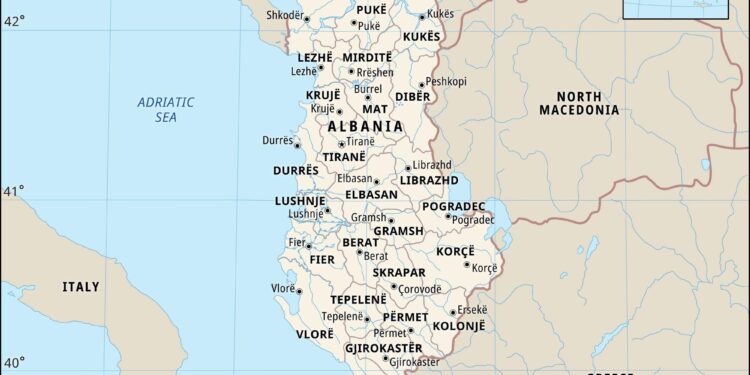Albania is currently experiencing a notable surge in the prices of dairy products and eggs, marking a significant shift in the country’s food market. Recent reports from local sources highlight that rising costs are impacting both consumers and producers alike, amid broader economic challenges. This upward trend in prices has sparked concern among households and industry stakeholders, as they navigate the implications for affordability and supply stability. The Albanian Daily News examines the factors driving this increase and its potential effects on the nation’s food sector.
Albania Experiences Sharp Rise in Dairy and Egg Prices Impacting Consumer Budgets
Consumers across Albania are feeling the pinch as prices for essential dairy products and eggs have surged significantly over recent months. Industry analysts attribute this sharp increase to a combination of rising feed costs, supply chain disruptions, and seasonal factors impacting local production. Households now face heavier grocery bills, forcing many to reconsider their purchasing habits amid tightening budgets.
Key Factors Driving Price Increases:
- Elevated costs of animal feed due to global commodity price hikes
- Logistical delays affecting timely delivery of fresh goods
- Reduced output from local farms due to adverse weather
| Product | Price January 2024 (ALL/kg) | Price May 2024 (ALL/kg) | % Increase |
|---|---|---|---|
| Milk | 110 | 140 | 27% |
| Cheese | 350 | 450 | 29% |
| Eggs (per dozen) | 180 | 230 | 28% |
The financial strain is especially pronounced among lower-income families who allocate a larger share of their income to food essentials. Experts warn that unless inflationary pressures ease, the overall demand for dairy and eggs could decline, impacting both consumers and producers alike. Government authorities are reportedly exploring support measures to stabilize prices and ensure food security for the population.
Factors Driving the Surge in Albania’s Dairy and Egg Markets Explored
Several key factors have contributed to the recent rise in dairy and egg prices across Albania. Firstly, increased demand driven by population growth and enhanced consumer purchasing power has put pressure on local supplies. Additionally, disruptions in global supply chains have affected feed availability and imported inputs, forcing local producers to grapple with higher costs. The weather patterns over the past season, marked by irregular rainfall, have also played a role in reducing fodder quality and availability, further escalating production expenses.
On the production side, small-scale farmers face challenges adapting to evolving market conditions, impacting overall output volumes. Meanwhile, government policies aimed at improving quality standards and food safety have led to increased operational costs for producers. Below is a summary of the most influential drivers behind the price surge:
- Supply chain disruptions: Affected raw materials and feed imports
- Rising operational costs: Increased labor and transportation expenses
- Consumer demand growth: Driven by urbanization and higher incomes
- Environmental factors: Adverse weather impacting production
- Regulatory changes: Stricter quality and safety standards
| Factor | Impact on Prices |
|---|---|
| Feed Cost Increase | +15% |
| Labor Price Rise | +10% |
| Demand Growth | +12% |
| Regulatory Compliance | +8% |
Policy Suggestions to Stabilize Prices and Support Albanian Farmers Amid Inflation
To curb the rapid surge in dairy and egg prices, targeted measures must be implemented that directly alleviate the pressures faced by Albanian farmers. Subsidies on essential farming inputs like feed, veterinary services, and seed stock can reduce production costs, enabling farmers to maintain stable prices for consumers. Additionally, increasing access to affordable credit through state-backed loan programs will empower small-scale producers to invest in upgrading facilities and boosting efficiency, ultimately helping to moderate price hikes across the supply chain.
Policy frameworks should also emphasize strengthening local market infrastructures and supply chains to prevent excessive markups and shortages. Establishing cooperatives and promoting direct sales channels between farmers and retailers could bypass intermediary costs, benefiting both producers and end consumers. Below is a comparative overview of key policy recommendations aimed at stabilizing prices and supporting farmers:
| Policy Measure | Expected Impact | Beneficiaries |
|---|---|---|
| Input Subsidies | Lower production costs | Farmers, Consumers |
| State-backed Loans | Increased investment capacity | Small farmers |
| Market Cooperatives | Reduced intermediaries fees | Farmers, Retailers |
| Direct Sales Channels | Price transparency & stability | Consumers, Producers |
The Way Forward
As Albania experiences a notable surge in dairy and egg prices, the impact on consumers and businesses alike remains a critical area to monitor. Stakeholders await further developments and potential government responses aimed at stabilizing the market. Continued reporting will provide insights into how these price shifts influence the broader Albanian economy in the coming months.
















